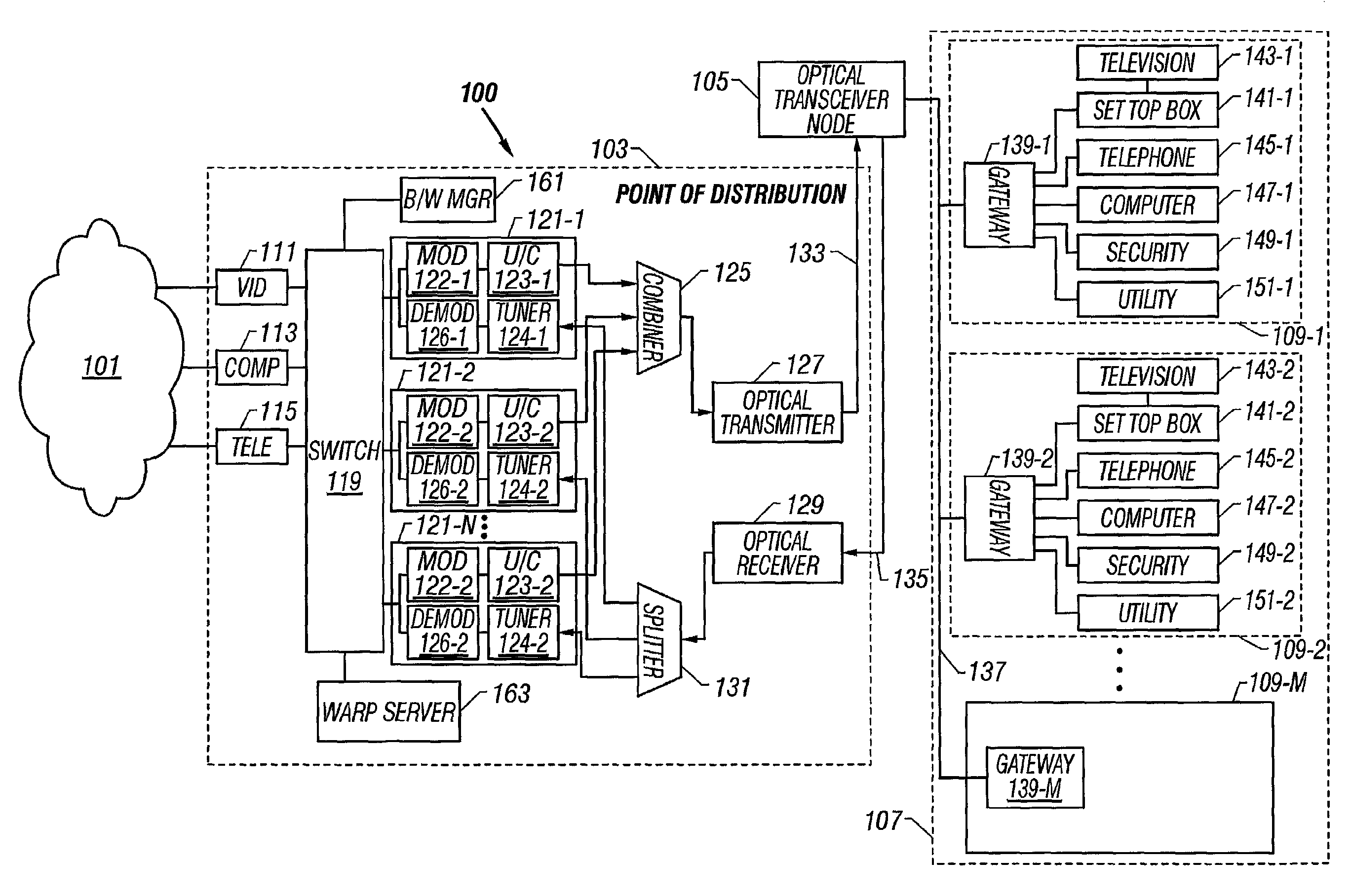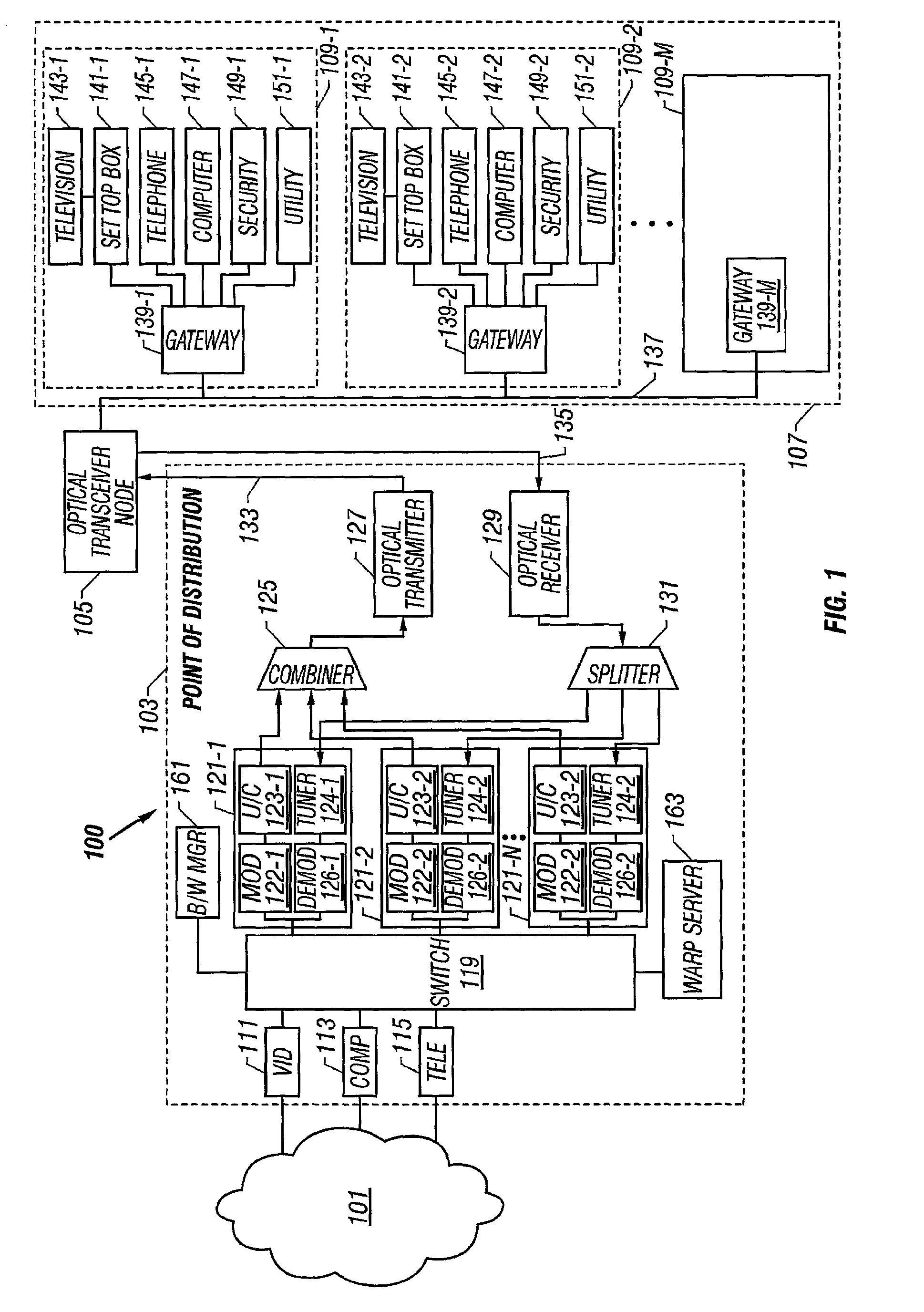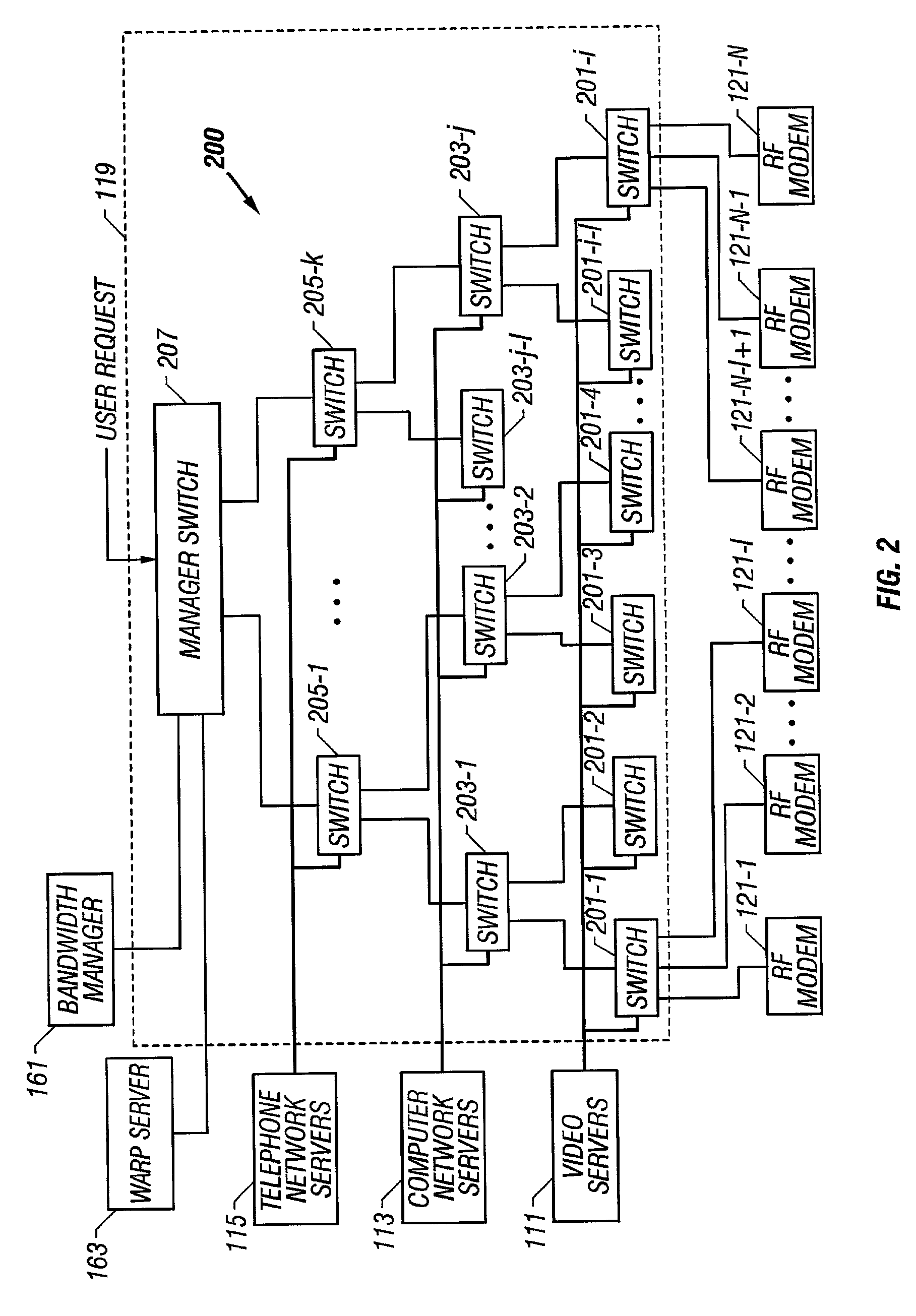Method and system for communicating information between a point of distribution and a plurality of subscriber destinations via a hybrid fiber coax delivery plant
a technology of fiber coax and distribution plant, applied in the field of information delivery and distribution, can solve the problems of signal loss and line noise, existing network plant uniformity, and insufficient broadband content provisioning technology to meet the demand
- Summary
- Abstract
- Description
- Claims
- Application Information
AI Technical Summary
Benefits of technology
Problems solved by technology
Method used
Image
Examples
Embodiment Construction
[0037]The present invention provides a system and method for delivering digital or analog information to subscribers via allocated, unshared, bi-directional and deterministic bandwidth over a network. The present invention increases available bandwidth to subscribers or otherwise improves quality of service by providing unshared and dedicated bandwidth rather than shared and non-deterministic bandwidth. The network may be implemented in any desired manner, such as a hybrid fiber coax (HFC) network, an all-optical fiber network, etc.
[0038]The HFC network is a wired, two-way communication network based on radio frequency signals of the type received by television receivers. The HFC network uses linear fiber optics to transmit signals from a cable headend or distribution hub to an optical transceiver node close to subscriber destinations. A conventional coaxial transmission line bus structure may be used, usually with inexpensive radio frequency (RF) amplifiers as needed to cover the d...
PUM
 Login to View More
Login to View More Abstract
Description
Claims
Application Information
 Login to View More
Login to View More - R&D
- Intellectual Property
- Life Sciences
- Materials
- Tech Scout
- Unparalleled Data Quality
- Higher Quality Content
- 60% Fewer Hallucinations
Browse by: Latest US Patents, China's latest patents, Technical Efficacy Thesaurus, Application Domain, Technology Topic, Popular Technical Reports.
© 2025 PatSnap. All rights reserved.Legal|Privacy policy|Modern Slavery Act Transparency Statement|Sitemap|About US| Contact US: help@patsnap.com



